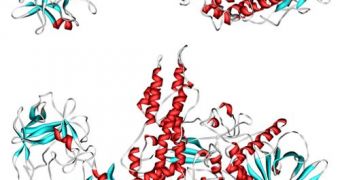Scientists write in a new study that botulinum injections, of the same type used for cosmetic surgeries and augmentations, may actually be suited for treating some types of migraine headaches. The preliminary results of the investigation show that migraine headache patients refer to as being crushing, vice-like and eye-popping are reduced in frequency and intensity by the toxin. On the other hand, the researchers add that the headaches described as a buildup of pressure in the head are not influenced by the chemicals. Details of the investigation appear in the February issue of the JAMA journal Archives of Dermatology, e! Science News reports.
Unlike simple, common headaches, migraines are extremely painful to endure and can at times have debilitating consequences. It is estimated that roughly 28 million US citizens experience them regularly, and so the target group for the new investigation is extensive. The discovery that botulinum seems to alleviate some migraines was made by researchers who were conducting clinical trials suing botulinum type A to treat wrinkles and facial lines. “The initial promise of a new prophylactic [preventive] therapy for migraines was met by the challenge of replication of these results. Researchers have searched for patient characteristics that may predict a favorable treatment response,” experts write in the journal entry.
From SkinCare Physicians expert Christine C. Kim, MD, now owning a private practice, treated 18 patients with the toxin. The people, with an average age of 50.9, also reported experiencing various types of migraines. Ten had imploding headaches, of the type described before, and nine had exploding migraines, which were described through words such as head-splitting, and pressure buildup. Some participants featured more than one type of migraine. They were investigated again three months after the initial botulinum treatment had been applied, Kim says. She adds that 13 patients showed signs of improvement, of which 3 previously had exploding headaches, and 10 imploding headaches.
The six patients that did not respond to the treatment all had exclusively exploding headaches. “These preliminary data are intriguing, and our results provide support for the hypothesis that patients with migraine that is characterized by imploding and ocular headaches are more responsive to botulinum toxin type A than those with migraine characterized by exploding headaches. Our findings invite consideration of using botulinum toxin type A injections to prevent migraine headaches and may promote the role of the dermatologist in the treatment of patients with migraine. However, well-controlled trials need to be conducted to confirm these findings,” the authors explain.

 14 DAY TRIAL //
14 DAY TRIAL //